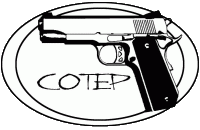
 |
Quote:
DVC, Mary |
My .02 cents? Glad you asked!
I only take quick kill or combat training. I have never shot any Saturday IDPA or USPC, just not my thing. But once you find an instructor you think you like, do a thorough look/see at them anywhere you can find information. Most instructors have all kinds of people commenting about courses they have taken with that instructor, in forums or blogs. Look for what people liked, or shortfalls they have mentioned. I do like weekend events, gives me some time for socializing with classmates as I am pretty quiet/concentrated while training. I also like to keep notes during training so I can practice weeks after class is over. Notes help me remember little "tricks" mentioned by the instructor, or other students, as well as the techiques taught for the weekend as a whole. I have noticed more and more outdoor ranges offering training from people advertised as "highly qualified" in some shape or form. Might be a place to find a good trainer. |
Quote:
"If you’re in a gunfight: - If you’re not shooting, you should be loading. - If you’re not loading, you should be moving. - If you’re not moving, you’re dead." Even if your reloading you should be moving!!!!!!!!!!!!! |
Quote:
|
Thanks all. I really appreciate the replies. Have plenty of time to keep looking and I plan to do some asking around at some of the gun shops here.
Sent from my DROID4 using Tapatalk |
Too bad many of you are too far because one of the things I offer to share are some of the things I learned through the years in all the different tactical schools I've attended. Free!
|
IDPA: shoot from cover or while retreating
USPSA: stand and shoot in the open IDPA: Most stages are "Vickers Count" which means you shoot until the targets are neutralized, however many shots it takes. Only the hits are scored, or lack thereof. USPSA: You are penalized for missed shots. IDPA: Failure to neutralize any target is a 5 second penalty when on a Vickers Count stage. USPSA: It can be advantageous to skip a target IDPA: draw from concealment from a close fitting holster USPSA: draw from a speed holster IDPA: no lightened slides, no compensators, no optics allowed USPSA: lightened slides, compensators, optics allowed. |
Quote:
Very much DISAGREE with your statement. |
Quote:
|
Quote:
My earlier post was not to compare IDPA to training, but to let the OP how IDPA works. There are times to sit still and times to move, You just have to make the right choice. But then again there are some here that know more then me.....or they think that anyway. Most get training from someone who has never been in a gun fight, Can they train you for one? Not really. |
| All times are GMT -4. The time now is 11:45 PM. |
Powered by vBulletin® Version 3.8.6
Copyright ©2000 - 2025, Jelsoft Enterprises Ltd.